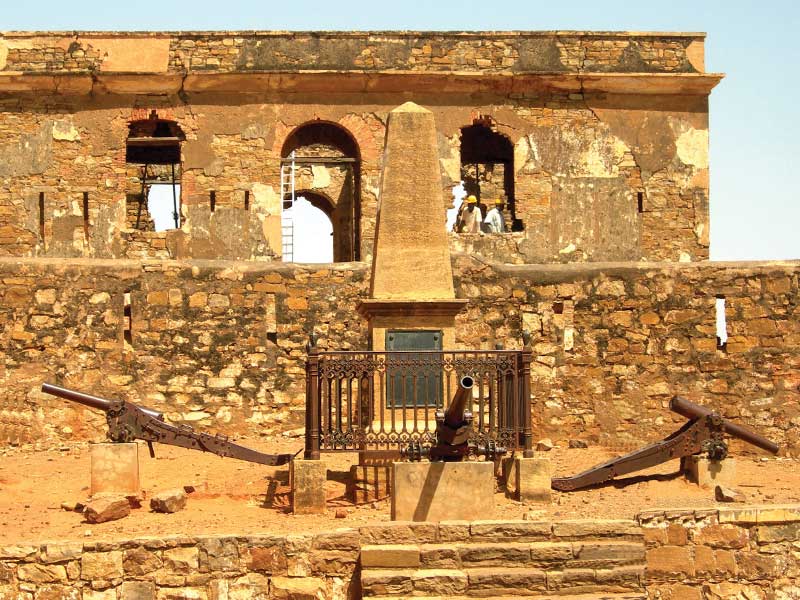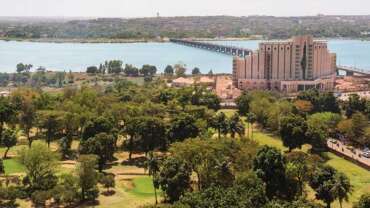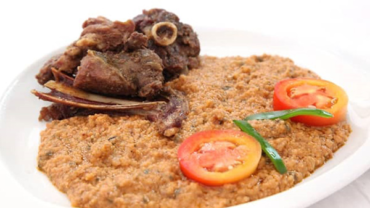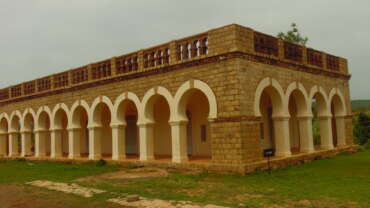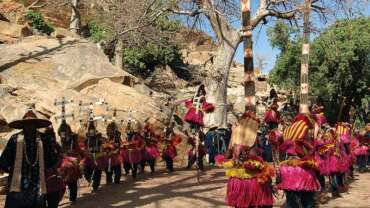Tourist Areas of Mali
Kayes
The city of Kayes was in 1892 the first capital of Upper Senegal-Niger future French Sudan. To leave this place of capital in Bamako afterwards. The city is dotted with symbols of colonization.
A concentrate of all types of tourism, Kayes has many sites and curiosities which are among others: the Colonial Buildings, the Island of Modinkané located 12km from the town of Kayes, the Tata de Koniakary 75 km from Kayes, the Chutes du Felou at 17km, the Gouina Falls at 80km, the town of Toukoto at 250km, the town of Kita at 394km, the Kita kourou at kita, the Sacred Vestibule of the griots of Boudefo, the Statue of the Virgin Mary, the Reserve du Bafing, the Baoulé loop, the Senegal River which allows you to take a cruise.
over an area of 120,760 km², home to 1,438,261 inhabitants, made up of Khassonkés, Soninkés, Peuls, Bambara, Moors and Malinkés.
The city of Kayes was in 1892 the first capital of Upper Senegal-Niger future French Sudan. To leave this place of capital in Bamako afterwards. The city is dotted with symbols of colonization.
A concentrate of all types of tourism, Kayes has many sites and curiosities which are among others: the Colonial Buildings, the Island of Modinkané located 12km from the town of Kayes, the Tata de Koniakary 75 km from Kayes, the Chutes du Felou at 17km, the Gouina Falls at 80km, the town of Toukoto at 250km, the town of Kita at 394km, the Kita kourou at kita, the Sacred Vestibule of the griots of Boudefo, the Statue of the Virgin Mary, the Reserve du Bafing, the Baoulé loop, the Senegal River which allows you to take a cruise.
Tourist Attractions
– The Village of Kakadian: Natural site, its main interest lies in the ritual complex (places and objects).
– The Djibaba site: 32km southwest of the town of Kayes in the direction of Sadiola. Natural site made up of a round pond and its source and a rock wall;
– Gouina Falls: They are located 28 km from the city of Kayes (Kayes-Bafoulabé section) in the classified forest of Bagouko. Natural site, they give a view of a stream of water flowing into a basin. The site abounds in a very rich flora and fauna including hippos, antelopes, monkeys, birds, etc .;
– The village of Tinkin and its surroundings: It is located 10km from Diamou. Natural site which includes a relief made up of hills, palm trees (palm trees in Doum) in an oasis called “Solimasépé”, forming a valley;
– The village of Makania and its surroundings: Natural site located 10km from Diamou, its main interest lies in its identity marked by the presence of the two twin hills which surround it, the possibility of swimming and camping in Tacoutalla;
– The island of Modin Kané: It is located 30 minutes by canoe from the village of Kakoulou or 15 minutes from the village of Sabuciré du Logo. Natural site formed by the presence of an island 7km long with two villages (Modin Kané and Bankamé);
– The village of Sabouciré: It is located 27km from Kayes (via Médine). It is a historic site. The village was the scene of the first battle of colonial penetration on September 22, 1878 which put an end to the kingdom of Logo;
– Les Kippes de Kéniou: It is located 10km from Kayes before the hill of Medina. It is a natural site which offers a canoe trip to reach the cliffs called “Kippes”;
– Le Fort de Médine: Located 12km east of the town of Kayes. It is a historic site. The Fort itself was built by General Louis Léon Faidherbe in 1855 to resist the Toucouleur army of El Hadj Omar Tall;
– The Félou Falls and its surroundings: Located 2km from Medina on the Senegal River towards Diamou;
– Lake Magui: 70km long and 2km wide and extends over three municipalities: Segala, Maréna Djombougou and Séro Diamano;
– Fataladji: historic site, it is located 58km from Kayes and 2km from Segala. At Fataladji, there was a decisive battle against the colonizer upon his penetration;
– The Tata of El Hadj Omar Tall de Koniakary: It is located 67km from Kayes. It is a historical and religious site. The Tata is a military fortification (wall) built by El Hadj Omar Tall to resist enemy armies. It is one of the rare fortifications of the Toucouleur army which has been able to withstand time. It was built in 1885, 115m long, 6m high and has 8 towers within it;
– Le Tapa Kourou: natural and cultural site, it is located 85km from the town of Kayes. It is a sacred hill having a remarkable trapezoidal shape in the center of which is a round mound;
– The river product of the Bafoulabé area: the river is the subject of great curiosity in Bafoulabé. It is there that there is the point of confluence between the Bakoye (or white river) which runs along the railway line and the Bafing (or black river) on which the Manantali dam is located;
– La main d’Archinard or Ecriture d’Archinard: The monument is located 1km from the city of Yélimané, near the aerodrome;
– The communal grave of the hamallist talibés of Yélimané: A historic site, located in the center of the city of Yélimané. It should be noted here that Sheik Hamalla was by his wisdom, his knowledge and his actions a great leader of the Tidjanite brotherhood which opposed colonization.
– La marre de Toya: a natural and cultural site, located in a cave;
– The transhumance of herds in Lée: The village of Lée is located in the commune of Gory Diafounou which is 35km from the city of Yélimané;
– The town of Kita and surroundings: The town of Kita is located 425km of road and 307km of railway from the city and located… .. from Bamako. The city of Kita, capital of the Circle of the same name is full of multiple tourist sites that revolve around the city. Among these we can cite:
– The town of Kita, The Kitakourou, The Djikoroni, The village of Boudefo, The village of Fodébougou, The village of Goumanko.
SOUTH MALI
BAMAKO, the caiman river: Bamako is located in a basin surrounded by five peaks of the Manding Mountains (Koulouba 404m, Farakoulou 463m, Kouloumagni Koulou 483m, Point G Koulou 493m and Lassa Koulou 504m). Founded in 1640 by the Niaré, Touré, Dravé and Somono families, the city of the three caimans is the political and administrative capital of the Republic of Mali. Built into a district, Bamako covers an area of 1,420 km² divided into six urban communes. The streets of the city of Bamako are lively, active and colorful. Bamako is charming, authentic and traditional at the same time. The city has modern and expanding tourist infrastructure.
SIKASSO, Nature, Greenery: The kingdom of Kénédougou of kings Tiéba and Babemba TRAORE and the empire of Wassoulou with Almamy Samori TOURE marked the history of the resistance of Sikasso against colonial penetration.
Cultural city, Sikasso is home to mask dances, the triangular balafon festival, traditional events and musical expressions of Wassoulou.
Sikasso, the verdant is the capital of the 3rd administrative region of Mali. Located in the south of the country, it borders with three countries: Côte d’Ivoire, Burkina Faso and Guinea Conakry.
The wettest area in Mali with an average annual temperature of 27 ° C, the region covers an area of 76,480 km². Its population is estimated at 1,800,000 inhabitants, made up of Sénoufo, Minianka, Bobo, Peuls, Bambara and Malinké etc. The region of Sikasso constitutes an ecotourism site par excellence.
CENTRAL MALI
KOULIKORO, a Millennial Civilization: With an area of 90,120 km2 and a population of 1,570,507 souls, the region of Koulikoro, very rich because of its glorious past, has as a whole five (05) very varied cultural areas which are:
Ouagadou in the North;Mandé in the South;Bélédougou in the west and in the center;Baninko in the EastThe Djitoumou in the South East. This region was the cradle of West African civilization with two (02) Great Empires: Ouagadou and Mali, whose influence has gone beyond African borders.
Koulikoro is known thanks to Nianan Kulu, an imposing site where Soundiata KEITA, founder of the Empire of Mali, distinguished himself during the battle against Soumangourou Kanté, the sorcerer king of Sosso who would have disappeared there.
Today, the second administrative region of Mali, Koulikoro is an industrial zone where several factories are located: the Huilerie Cotonnière du Malin (HUICOMA); the Naval Construction Industry of Mali (INACOM), the Grand Moulin du Mali (GMM), the Brasserie du Mali (BRAMALI), the Cotton Ginning Factory.
Segou: Welcome to Ségou, the land of shea butter, “four thousand four hundred and forty-four balanzans (acacia albida) and the only hunchbacked foot, the meaning of which even the locals don’t know”.
Segou was the heart of the powerful Bambara kingdom founded in 1712 by Mamary Biton COULIBALY and his Tonjons, relayed by the dynasty of DIARRA N’Golossi. Kingdom very warlike and very attached to the land, Ségou will be conquered in 1862 by Toucouleur El Hadj Omar TALL and occupied in 1891 by the French Archinard.
4th administrative region of Mali with an area of 60,947 km² and a population of 3,038,000 inhabitants made up of Bambara, Miniaka, Bwa, Soninké, Peuls, Moors, Somonos and Bozos whose pride is expressed through the nobility of the dances that are Bara, Bondialan, Sogola, Boron, Naminé. These dances are performed alone or accompanied by masks and puppets.
Djenné, the twin sister of Timbuktu: On the Niger River, two cities by their intellectual and political importance, by their wealth born of trade, the luster of their scholars, the beauty of their monuments that have come down to our generation, have conquered a celebrity that even today the visitor will not find spoofed. These two cities are Timbuktu and Djenné which it has been said in Mali that they are like two halves of the same city.
The learned Es Saadi said of Djenné: this city is large, flourishing and prosperous, it is rich, blessed from heaven and favored by God. He bestowed on this country all his favors as a natural and inborn thing. The inhabitants of Djenné are benevolent, kind and hospitable.
Listed as a World Heritage Site by UNESCO in 1988, Djenné is a religious city founded at the dawn of the 9th century which produced scholars in the Muslim world including Mohamed Bagayoko.
The city offers to the glances the splendid architecture of its two-storey houses built in mud and pediment, rare example in Africa of a site entirely preserved from the ravages of time and predatory modernism.
No impression is as strong as the one felt by the traveler who arrives on a Monday, market day in Djenné, around noon the merciless light blazes the colors of the boubous and the clamor of the crowd fills the space in front of the famous mosque of Djenné. It has a prayer space of 50 m by 26 m, an interior courtyard, 104 ventilation and ventilation holes and 99 pillars that support the roof, making this mosque the largest earthen building in the world. The great Mosque of Djenné is the subject of an annual plastering ceremony which brings together the whole city and its surroundings for two days.
The fascinating dogon universe: The Dogon country is undoubtedly the most picturesque region of Mali, beauty and diversity, the architectural style of the houses, the way of life of the inhabitants are all unforgettable attractions.
From Mopti, the entrance to the Dogon country evokes the entrance to a temple. The geography itself allows the comparison: rising chaotically from the lowlands of Macina to break into a peak which dominates the plain of the gondo -séno: it is the cliff of Bandiagara.
Listed as a world cultural and natural heritage of humanity by UNESCO since 1989, the Dogon country is like a temple which one can only enter if one has patiently initiated oneself to admit the radical strangeness of a universe cultural whose values are based on an extraordinarily complex and rich philosophy and religion. Here, the natural universe is no less difficult to access than the cultural universe. Sangha is only the pre-style of the temple, whose most secret and beautiful chapels are nestled in the hollows of the cliff.
The mask dance in Dogon country is sacred. Originally, in African civilizations all dances are linked to religious rites. Among the Dogons, the dance of masks is exclusively a matter for men. The Dogon ballet, composed of a variable number of dancers, includes an immutably fixed number of kinds of masks among which, the kanaga “mask of the Gods” which even became the emblem of Mali at a given time.
The Dogons are a proud people whose culture is considered to be one of the richest and oldest in Africa.
Mopti: At the confluence of the Niger River and its tributary the Bani, Mopti, capital of the region with its 108,000 inhabitants, originates from Bozo camps dating from the 12th century. It quickly spread over islands linked by dikes. Crossroads of the ethnic groups of the river, the north, the central savannas and the Dogon cliffs, Mopti commonly called “Malian Venice” because of its insular situation is a prosperous city, full of movements and noise.
NORTH-EAST MALI
Timbuktu, the pearl of the desert: Gold comes from the South, salt comes from the North, silver from the country of the whites, but beautiful things, good stories are only found in Timbuktu ” announces the illustrious scholar writer Es-Saadi.
Timbuktu, which gave its name to Mali’s sixth administrative region, is a religious city founded in the 12th century and was a metropolis in medieval times.
According to the hypotheses, his birth is the fact either of a former camp of Berber nomads, or of the self-sacrifice of an old woman called “Buktu”, responsible for guarding the Tuareg well outside the transhumance seasons, or the origin from the Songhai populations, having named it for its geographical location in a basin.
Timbuktu, the pearl of the desert, the Athens of Africa acquired from the outset an indefinable mystery which makes some people say: Timbuktu cannot be told, we see it or we do not see it.
After a flawless influence of several centuries well beyond the limits of the Muslim world, Timbuktu retains the rich hours of its grandiose past.
Thousands of manuscripts, handed down from generation to generation, remain in the libraries of its Islamic university.
This unprecedented crossroads, five centuries ago when traders from the Sahara, savannas and forests exchanged metals, salt, spices, fabrics, food products, still remains today the rallying point of all enthusiasts and of a trade still active.
Timbuktu has been classified as a World Heritage Site by UNESCO since 1988.



